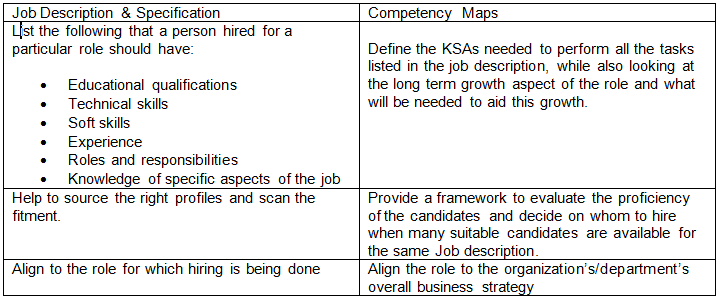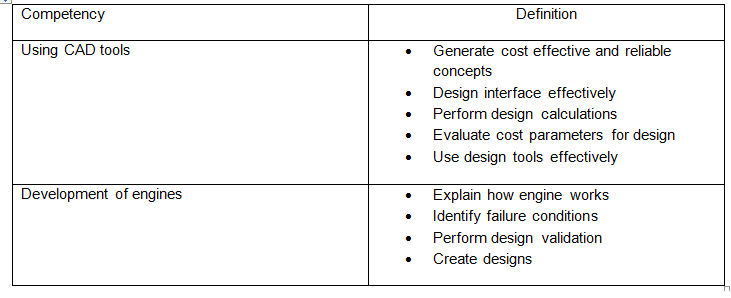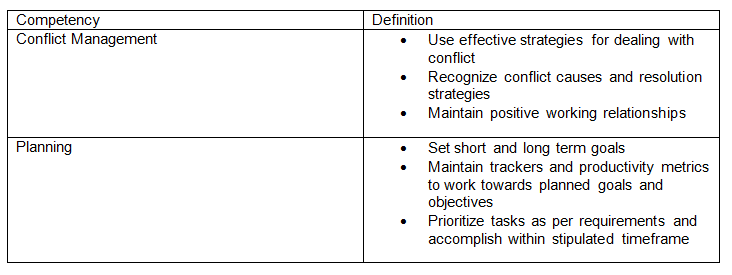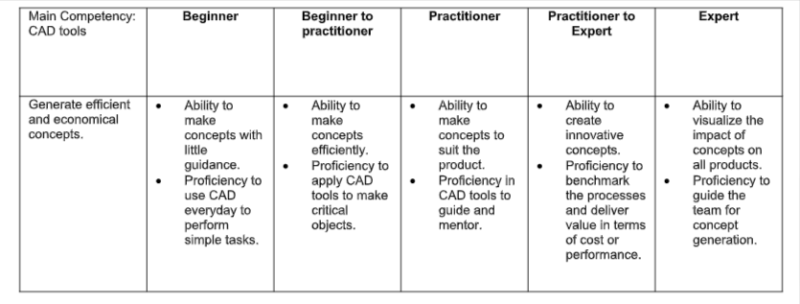The Complexity Of Competency Mapping
Competency mapping exercises can be challenging for organizations. "Why?" one may wonder since people are equipped with competencies to perform their tasks efficiently and make organizations successful. Have competencies become too complex to decipher? Or, has the exercise itself become too difficult for organizations because knowledge, skills, and attributes/abilities (KSAs) are too vast to categorize without wasting too much time? This article will delve deeper into the complexities of competency mapping and illustrate with an example the various stages of the process.
Introduction
We were invited to perform a competency mapping exercise by a vehicle manufacturing company. The intent was to map competencies to job roles, identify skill gaps, and suggest individual development plans (IDPs) wherever gaps were causing performance issues. For the pilot, we had to focus only on one department. We were given a month to complete the assignment.
This did not seem like an impossible agenda, as it was a simple and straightforward task. A couple of days into the task, we realized that things were not as simple as they seemed. Each department was divided into several subunits. Each subunit had several job roles and each role had several associated skill sets.
Past attempts to group skills and assess skill gaps had failed because competencies had become complex clusters that were deeply entwined and difficult to segregate. For example, engineers in the testing unit had the primary responsibility of testing an engine, for which multiple skills were needed. They also had several secondary and tertiary tasks to perform that called for a different set of KSAs. Apart from functional skills, there were also several behavioral skill requirements for their job roles.
With such complex skill clusters in each subunit of the department, we realized we were looking at a skilled web that would take a long time to untangle, categorize, and map. To accomplish this, we decided to follow a series of steps.
Creating An Understanding
Though stakeholders at the top management level were driving this exercise, we realized during our initial interactions that those at the middle and lower management levels did not have an accurate understanding of what the competency mapping exercise meant.
There was a tacit assumption among team leads and managers that the tasks performed by their team members were synonymous with competencies. The concept of "competency" was not familiar to them and if a person could perform tasks, they were considered "competent." Typically, many don’t want to know beyond this and wonder why it is necessary to know more, as a person performing tasks and people managing tasks are aligned on the expectations.
We strived to explain what competency means with the example of a cook's job role. A cook needs knowledge of different cuisines, insight into audience preferences, expertise in blending ingredients for the perfect taste, aesthetic presentation skills, and so on. Together these skills define the competency of a cook. The tasks of a cook, such as preparing dishes, do not translate to the competency of "cooking." On the contrary, the competency of a cook determines how well they perform tasks. So, based on the level of proficiency in these competencies, a cook can be termed mediocre, excellent, or any other level.
This simple example was relatable to all and we had achieved our first objective of helping our stakeholders understand the importance of defining competencies. We then proceeded to provide the following definition of competency and competency mapping: The knowledge, skills, attributes (KSAs), and behavior needed to perform tasks successfully or efficiently is defined as competency. So, a person is termed "competent" when they perform their job tasks at their efficient best.
Competency mapping is the process of identifying the KSAs and behavior needed to perform a specific job role.
Emphasizing The Benefits Of Competency Mapping
We also highlighted the following benefits of competency mapping so that we had the complete "buy-in" of the middle and lower-level management stakeholders because the exercise can consume their time, as well as their team's. Without seeing the goal, we realized they would not be fully invested in the process and unless that happened, our efforts would not succeed.
We explained that competency mapping is critical for:
- Performance development: Makes decision-making easier during performance appraisals, especially with regard to promotions
- Recruitment and selection: Helps to identify the right skills for job roles and provides a basis for making hiring decisions more easily
- Training and development: Enables focused training and skill support interventions
- Succession and career planning: Provides a clearer direction regarding career and skill paths, as well as growth
- Compensation: Enables benchmarking salaries and other compensation benefits when the skill parameters for job roles are clearly defined
Organizations and departments have a competitive edge when competencies are clearly defined and articulated because they know what to look for while hiring and how to grow competencies to be future-ready. Moreover, clearly defined competencies build greater cohesion within an organization, as there is more transparency and alignment with the organization’s mission and core values.
Identifying The Department And Hierarchy
Our next task was to identify which department we should choose for the pilot and who would be our target audience. Discussions with the top management helped us understand that the engine department would be ideal for the pilot project, as it was facing several challenges including attrition and performance issues. Since most of the issues were being faced at junior levels, we decided to focus on the engineers up to the assistant manager level.
Job Analysis
Our most crucial task now began, which was to analyze job roles and identify related KSAs and behaviors.
Job Descriptions And Specifications
We kicked off with the tried-and-tested method of collecting job descriptions and specifications. Here is a brief description of what these terms imply:
- Job descriptions detail the duties and responsibilities of a job
- Job specifications, on the other hand, specify the qualities required from a job holder
We continued to perform the next steps in the process. First, we met the team leads, who were able to provide job descriptions that they typically used for hiring various roles in their team. Apart from this, they did not have any documented skill list.
We then met the managers of each subunit. They were additionally able to give us some Excel sheets that had a brief description of the tasks that their team members performed. This gave us a summary of job specifications.
Often, competency maps are mixed up with job descriptions and specifications. We found this happening here too. We had to help our stakeholders understand the following differences so that we could enlist their help to identify KSAs for job roles.

Competency mapping table 1
Having provided a better understanding of the importance of competency mapping, we proceeded to work with stakeholders to identify skills for job roles in the engine department. Job descriptions and specifications were a good starting point to arrive at the KSAs for every role.
We had detailed interviews with team leads and managers, which helped us consolidate skill lists and fill some of the gaps. For example, some key technical skills, such as knowledge of CAD design, were stated in job descriptions. But tertiary skills, such as emission testing ability, were missing. Some behavioral skills were also missing from job descriptions.
Job Shadowing
We felt it was necessary to observe the tasks of some sample audience of each role for some time and also interact with them. The intent was to understand if the KSAs we had identified earlier mapped to real-time tasks being performed. During the job shadowing exercise, we found that, indeed, there were some changes that needed to be made to KSAs, as some skills had become redundant for certain roles, and for others, there were new skills that had become necessary. We were able to tweak KSAs and map them more accurately to tasks and corresponding roles.
Skill Validation
We also analyzed all hiring and exit data in the organization to understand the typical skill requirements vs gaps. This gave further insight into the kind of skills that existed in the organization versus what was essential for success in a specific job role. We then met the top-level management stakeholders, discussed the skill list we had gathered, and enlisted their help to validate data. Through step-by-step data analysis, we were able to derive a comprehensive skill list related to different job families in the engine department.
Preparing Competency Maps
Having prepared a list of skills for job roles in the engine department, we went on mapping skills to competencies required for each job role. Here is an example of a list of functional competencies for a junior-level engineer in this department:

Competency mapping table 2
Following were some of the behavioral competencies we identified:

Competency mapping table 3
It was ideal to further categorize competencies into threshold competencies to define the minimum skills required for a role and differentiate competencies to define what would be the key differentiator for a role. Here is a generic example from the learning industry to illustrate the concept:

Competency mapping table 4
Indicating Proficiency Levels
For the next step, it was important to create a framework for rating competencies. We used the tried-and-tested Behaviorally Anchored Rating Scales (BARS) to define proficiency levels. Typically, BARS are presented as a scale with several points to indicate skill progression required for specific competencies. While creating the BARS scales, it is important to provide a clear definition of competencies at each level. By including specific markers of competencies along with numerical ratings, BARS can be less subjective. Here is an example of the BARS scale we created for competencies in the engine department:

Competency mapping table 5
With all skills we had gathered, we created a comprehensive competency dictionary with BARS scale ratings.
Evaluating Performance
Employees can be assessed for their competency levels through a combination of various techniques. Here are some that we used:
- Self-assessment
We asked the target audience of our study to complete a self-assessment of their skills. It is important to know what the target audience themselves think about their competency levels so that their opinion is taken into consideration. - Assessment by functional managers
Functional managers are people who work closely with teams. Their evaluation and ratings are important for understanding the current skill levels of their team members. Their evaluation can be compared with self-assessment ratings to identify competency gaps. - Psychometric tests
To bring objectivity to the exercise, psychometric tests are one of the most effective techniques. These tests assess the aptitude, interest of employees, and personality traits. This further helps to identify areas of strength and opportunity for each employee. The challenge we faced was in assessing functional competencies, as there were no customized assessments available for such niche competencies. We had to work with stakeholders to create some assessments. Again, we compared ratings with earlier ratings by employees themselves and managers. This helped us make objective decisions on the competency levels of the audience we were assessing.
While hiring new employees, however, we recommended the following 3 techniques, apart from interviews which are mandatory:
1. Assessment-Centered Exercises Including The Following
- Interviews
- Group activities
- Roleplays
- In-tray exercises
In assessment centers, employees needed to be assessed are required to perform the above activities in a simulated environment. Their skills, especially behavioral skills, are observed and evaluated.
2. Critical Incident Techniques
It is a method in which an interviewee is asked to recall and describe a time when an incident positively or negatively impacted a specified outcome.
3. Psychometric Tests
As described earlier, psychometric tests are the most tried-and-tested method to assess both functional and behavioral skills.
The above techniques call for a separate discussion and are not in the scope of this article.
Conclusion
We signed off the engagement by submitting a detailed report of our findings. We also created an individual development plan (IDP) for employees for those aspects of skills that could be improved through training, job shadowing, and other interventions required for skill enhancement.

